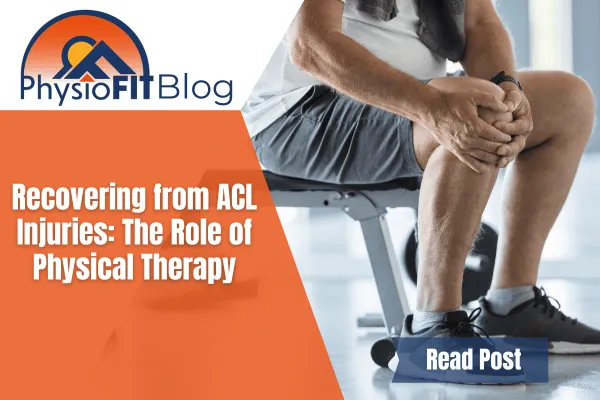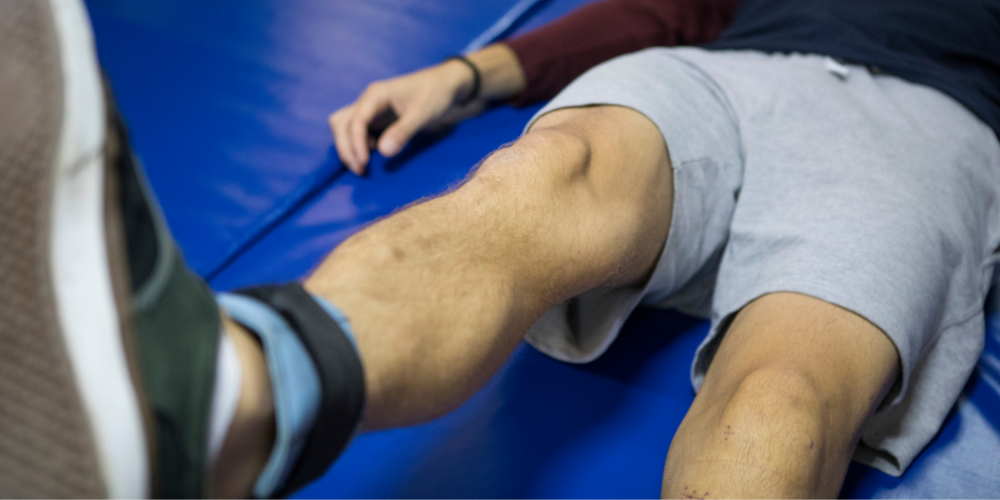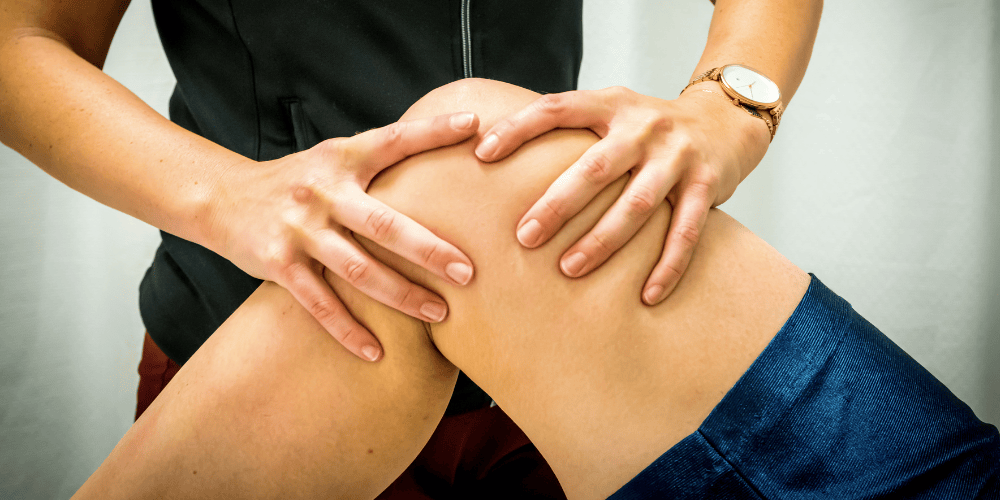Chronic Headache Relief
Free Your Mind From Chronic Headaches
Headaches are an occasional unwelcome guest for many of us, but when they become a frequent visitor, you may be dealing with chronic daily headaches. A broad term that includes various subtypes defined by their frequency and duration. These headaches can be significantly debilitating, but with assertive initial treatment and ongoing management, pain reduction and fewer headaches are achievable. If this strikes a chord with your experience, don't hesitate to schedule an appointment with us.
Discover Unprecedented Relief from Chronic Headaches at PhysioFit: We prioritize personalization in your healthcare journey, acknowledging that individuals with Chronic Headaches necessitate distinct treatment strategies. Utilizing the potency of empirically-supported, fitness-centric physical therapy in bend, we aim to do more than merely alleviate your symptoms. Our mission encompasses the enhancement of your holistic health, prevention of enduring pain, and speeding up your recuperation period, enabling a smooth transition back into your daily routines.
What You Should Know
Migraine headaches can be categorized into two types: episodic and chronic. While chronic migraines happen more than 15 days in a month, episodic ones occur less frequently.
The very medicine you're consuming for headache relief could potentially be causing headaches: Taking pain relievers beyond two days a week, even common ones such as ibuprofen, puts you at risk for what's known as a rebound headache. Similarly, abruptly discontinuing regular pain medication can provoke headaches.
The origin of your headaches may not necessarily be your head: Secondary headaches stem from an underlying health issue, like degenerative disc disease in the spine, sinus infections, or past experiences of head trauma. Although infrequent, persistent headaches and visual disturbances can also be caused by brain tumors.
A proper diagnosis of a TMJ or TMD problem involves a thorough evaluation from a professional.

What Causes Chronic Headaches?
The triggers of numerous chronic daily headaches remain somewhat elusive. Authentic (primary) chronic daily headaches don't present with a detectable root cause.
However, a series of conditions could instigate nonprimary chronic daily headaches, such as:
Vascular Issues: Any inflammation or complications with the blood vessels surrounding or within the brain, including serious events like a stroke, could trigger chronic daily headaches.
Infectious Diseases: Certain infections, notably meningitis, can also result in the manifestation of chronic daily headaches.
Intracranial Pressure Discrepancies: Abnormally high or low pressure within the skull could prompt these types of headaches.
Presence of a Brain Tumor: Brain tumors, whether malignant or benign, could be a potential cause of chronic daily headaches due to the pressure they exert on surrounding brain tissue.
Traumatic Brain Injury: Traumatic events causing injury to the brain can also be a catalyst for chronic daily headaches, as the brain recovers and copes with the trauma.
If any of this information resonates with your current situation, we urge you to schedule an appointment with us immediately. Don't let hip pain diminish your life quality - allow us to help you embark on the path to relief today.
Can Chronic Headaches Be Prevented?
The short answer is yes, chronic headaches can often be prevented, or at least their frequency and intensity can be significantly reduced. The following strategies focus on lifestyle changes and self-care measures which can help you manage and potentially prevent chronic headaches:
Identify Headache Triggers: Proactively documenting each headache in a journal can highlight patterns and triggers, thereby helping you to avoid these. Make sure to record important details like the time the headache started, what you were doing, and how long it lasted.
Cautious Medication Usage: Excessive consumption of headache medications, including over-the-counter ones, can increase the severity and frequency of headaches. It's advisable to consult your doctor for a safe plan to gradually reduce medication use, as abrupt discontinuation can lead to severe side effects.
Quality Sleep: For an average adult, 7-8 hours of sleep a night is essential. Try to maintain a consistent sleep schedule and seek medical advice if you have sleep disturbances, such as snoring.
Regular, Balanced Meals: Aim to eat healthy meals at consistent times daily. Be mindful of potential food and drink triggers like caffeine, and adjust your diet accordingly. Weight loss should be considered if obesity is a concern.
Regular Exercise: Engage in routine aerobic activities to improve your physical and mental well-being and reduce stress. Choose enjoyable activities like walking, swimming, or cycling, and remember to gradually increase the intensity to prevent injury.
Stress Management: Stress can often trigger chronic headaches. Incorporate stress-reducing techniques into your routine such as yoga, tai chi, and meditation. Moreover, staying organized, planning ahead, and maintaining a positive outlook can greatly help in managing stress.
Moderate Caffeine Intake: While caffeine is included in many headache medications due to its pain-alleviating properties, it can also exacerbate headaches. Try to reduce or completely remove caffeine from your diet.

Common Symptoms of Chronic Headaches
Chronic daily headaches, as the name implies, occur more than half the month, lasting for a period exceeding three months. Primary chronic daily headaches are those not precipitated by any underlying health condition.
These headaches can be of shorter or longer duration. Those falling in the long-lasting category persist for over four hours. The types of long-lasting chronic headaches encompass:
Persistent Migraines
Continuous Tension-Type Headache
Newly Appearing Daily Persistent Headache
Hemicrania Continua
Remember, if you resonate with any of the symptoms or conditions mentioned, we highly recommend making an appointment with us for a thorough evaluation and personalized treatment plan.
Please Note: The information provided on our website is intended for general education and is not a substitute for professional medical advice. Each individual's situation and body is different. Therefore, what may work for one person may not work for another. We care about your well-being and advise you to reach out to us to discuss your specific needs before implementing any advice from our website.
Your Source for All Things Physical Therapy in Bend Oregon
The PhysioBlog

Recovering from ACL Injuries: The Role of Physical Therapy
Recovering from ACL Injuries: The Role of Physical Therapy
Key Takeaways:
Physical therapy is crucial for ACL tear recovery: Physical therapy helps patients regain strength, flexibility, and range of motion in the affected knee. It also helps reduce pain and swelling, and can improve overall mobility.
There are various treatment options for ACL tears: Depending on the severity of the injury and your individual needs and goals, surgery and rehabilitation or therapy without surgery may be recommended. Before and after surgery rehabilitation is also important to ensure you have the most successful recovery.
Preventing future ACL injuries is important: Proper technique for movements and training, and exercises for strengthening the muscles surrounding the knee are essential for preventing future ACL injuries. It is also crucial to find the right physical therapist to guide patients through the recovery process.
Understanding ACL Tears and Recovery
In this segment, we delve into what it means to have an ACL tear, how it's caused, and the prevalence of the injury in the United States. Having a strong grasp of these concepts is critical for understanding how physical therapy can play a significant role in recovery. So let's dive in and unravel the mysteries of ACL injuries and the recovery process.

Definition of ACL Tear
An ACL tear refers to a complete or partial rupture of the anterior cruciate ligament, a vital ligament that connects the thigh bone to the shinbone. This type of injury can be devastating and painful, causing instability in the knee joint. Commonly caused by sudden stops or changes in direction while playing sports, an ACL tear can have a significant impact on physical ability and quality of life.
Initial symptoms of an ACL tear may include a loud pop at the time of injury followed by intense pain and rapid swelling. Following these early signs, patients may experience difficulty walking or putting weight on the injured leg along with feelings of instability in the knee joint.
To address an ACL tear, it's essential to see a medical professional who will assess the extent of damage and recommend appropriate treatment. Depending on severity and other factors, surgery or rehabilitation therapy without surgery may be suggested as treatment options. In either case, it's essential to seek guidance from an experienced physical therapist who will develop an individualized recovery plan for each patient. We’re ready and would be happy to help evaluate your potential injury here at PhysioFIT.
Proper diagnosis and recovery require understanding how to prevent future injuries as well. In addition to following a personalized therapy program established by their physical therapist, those looking to avoid future ACL tears should engage in exercises aimed at strengthening muscles around the knee joint while maintaining proper technique during activities like running or jumping.
Common Causes of ACL Tear
Several factors can lead to an ACL tear, which is a common injury among athletes and non-athletes alike. It occurs due to a twisting motion or sudden change in direction with the foot planted on the ground. Overextension of the knee or hyperextension when landing after a jump are also common causes of ACL tears. In addition, direct blows or collisions during contact sports like football can cause this type of injury.
ACL tears can also occur when one attempts to stop suddenly while running, pivoting with excessive force, or decelerating quickly. Furthermore, landing awkwardly from a jump or falling from a height can result in an ACL tear. Improper training techniques, overuse injuries, and fatigue may also increase the risk of an ACL tear.
It is worth noting that several unique factors may contribute to an ACL tear's occurrence, such as increased joint laxity resulting from specific genetic conditions and hormonal changes in women that affect ligaments' flexibility during their menstrual cycle.
Overall, it is essential to recognize the various common causes of an ACL tear in preventing future injuries and developing appropriate treatment plans for this debilitating condition.
Without physical therapy, recovering from an ACL tear is like playing soccer without a ball.
The Role of Physical Therapy in ACL Recovery
As someone who has experienced an ACL injury, I can attest to the importance of physical therapy in the recovery process. In Bend, the role of physical therapy in ACL recovery cannot be overstated. The relationship between physical therapy and ACL recovery is a vital one, as physical therapy provides a multitude of benefits that aid in the recovery process.
In this section, we’ll explore the importance of physical therapy for ACL recovery, including the various benefits it provides. We’ll also take a closer look at how physical therapy helps in ACL recovery, providing insights into the science behind the practice and how it can aid in the healing process.
The Importance of Physical Therapy
Physical therapy plays a vital role in the recovery of ACL tears. It is an essential part of the treatment plan for patients with such injuries. Through physical therapy, patients can regain their strength and mobility while improving their overall function and reducing pain. Physical therapy is highly recommended for individuals who do not want to undergo surgery or those who have completed surgery as it significantly reduces recovery time.
Physical therapy has several benefits that make it crucial in ACL recovery.
It helps to reduce inflammation and promote healing of the knee joint.
It increases range of motion, flexibility, and strengthens the muscles around the knee joint, which helps prevent further injuries.
Lastly, physical therapy provides patients with education on proper biomechanics and body movements that are necessary for daily activities and sports.
In addition to these benefits, physical therapists personalize rehabilitation regimes that consider patients' unique needs to ensure a successful outcome. The therapies may include exercises aimed at strengthening muscles surrounding the knee joint; ultrasound therapy; electrical stimulation; cryotherapy; hydrotherapy; soft tissue mobilization; or gait analysis.
It's worth noting that recent studies indicate that early physical therapy intervention following an ACL tear could lead to better outcomes compared to surgery alone. In some cases where surgery may be necessary, starting physical therapy before or immediately after surgery often improves postoperative outcomes. So reach out to us at www.PhysioFITBend.com sooner rather than later and we can get an early jump on your ACL recovery.
According to a 2019 study published by BMC Musculoskeletal Disorders, patients who underwent supervised physical therapy sessions significantly had better outcomes than those who did not go through them.
Thus, physical therapy plays an integral role in optimizing results for ACL injury recovery and building lifelong healthy habits that prevent future injuries. Physical therapy not only speeds up ACL recovery, but also improves overall knee function and prevents future injuries.
Benefits of Physical Therapy
Physical therapy offers several advantages that aid in the recovery process for those suffering from ACL tears:
First, it helps to reduce pain and swelling by employing techniques such as massage and electrical stimulation.
Physical therapy assists in restoring range-of-motion through exercises designed to improve flexibility.
It promotes muscular strengthening, which aids with injury prevention in the future.
Physical therapy supports balance recovery by using specialized exercises and techniques to help restore stability and coordination.
Lastly, physical therapy can help improve overall quality of life by working with patients on an individual level to tackle various issues related to their injury.
Moreover, Physical therapists possess advanced knowledge of exercise science and movement function that can be key for a successful treatment plan.
Recovering from an ACL tear can be painful and difficult. Therefore, patients who engage in regular physical therapy sessions tend to experience a faster rate of improvement than those who do not receive regular treatment. When it comes to ACL recovery, physical therapy is like a superhero, with the power to strengthen muscles and get you back on your feet.

How Physical Therapy Helps in ACL Recovery
Physical therapy plays a crucial role in ACL recovery by reducing pain and swelling, improving knee strength and mobility, and preventing the risk of future injuries. A physical therapist creates a personalized rehabilitation program for the patient, which includes different exercise routines to achieve the desired results. Additionally, physical therapy helps to regain balance and coordination and increases flexibility of leg muscles around the knee to avoid further damage.
The goal of your "physical therapy near me" search is to find the best PT possible to improve your condition gradually. Initially, the therapist may implement basic exercises like quadriceps strengthening, straight-leg raises, ankle pumps, or heel slides for optimal muscle stimulation in a controlled environment. Physical therapy sessions increase in intensity as patients progress towards full recovery through advanced techniques such as plyometric training, jumping on trampolines with single-leg enhancements.
Importantly, physical therapy educates patients about specific techniques for functional training. This approach allows individuals to improve their form during daily activities like walking or climbing stairs that make significant differences in day-to-day life after surgery.
Preventing Future ACL Injuries
In this part, we will discuss how physical therapy can play a crucial role in preventing future ACL injuries. We will explore various tips for avoiding future ACL injuries, including proper technique for movements and training. Additionally, we will look at exercises recommended by experts for strengthening the muscles surrounding the knee. It’s important to stay informed and take action to minimize the risk of re-injury.
Tips for Preventing Future ACL Injuries
Preventing Future ACL Injuries: Tips to Avoid Knee Damage
To avoid any further damage to the knee, it is essential to take preventative measures after an ACL injury. Here are three tips for preventing future ACL injuries:
Strengthen Muscles: One of the primary preventive measures is to strengthen the muscles around your knee area, such as hamstring and quadriceps. Targeted exercises can help improve stability and decrease pressure on your ACL.
Focus on Proper Techniques: It's essential to follow proper techniques during training or engaging in physical activities. Incorrect body movements or improper equipment use can lead to an ACL injury.
Warming up and Stretching: Finally, before indulging in any athletic activity or exercise routine, ensure that you properly warm up and stretch your muscles surrounding the knee region. This will help reduce the risk of injuring your knees.
It is essential to embrace these tips for preventing future ACL injuries by not overworking yourself while exercising, avoiding sudden changes in direction, and landing accurately after a jump. Additionally, wearing adequate shoes while indulging in sports activities can also prevent any fatal injury from happening.
According to research studies and surveys performed throughout recent years concerning this topic, athletes who use preventative measures have a lower risk of further ACL injuries than those who do not utilize similar successful strategies.
Get those knee muscles in shape with these simple yet effective exercises.
Finding the Right Physical Therapist in Bend Oregon
The importance of finding a skilled and experienced therapist cannot be overstated, as they can make or break your rehabilitation process. But with so many options available when you search “physical therapists near me”, it can be overwhelming to decide which therapist to trust with your recovery. In this section, we'll discuss the factors to consider when choosing a physical therapist in Bend.
Importance of Finding the Right Physical Therapist
The significance of discovering the ideal physical therapist for ACL recuperation cannot be overstated. This is because a proficient and experienced physical therapist is critical to recuperating from an ACL tear. Finding the Right Physical Therapist in Bend OR is important because they can provide relevant guidance, develop personalized treatment plans to meet patients' unique needs and goals, and oversee rehabilitation progress. Patients should take proactive measures in finding a skilled physical therapist who can put together a comprehensive and tailored recovery plan that is personalized to their specific case, ensuring successful long-term outcomes.
Choosing a proficient professional can mean quicker healing, fewer complications or setbacks during recovery, and improved long-term functional outcomes. A great place to begin searching for the right one is through referrals and reviews by your primary care physician as well as your social network. We’re a little partial to ourselves here at PhysioFIT, but that’s only because we’re pretty much the bees knees when it comes to ACL Recovery in Bend. Feel free to check out our referrals and reviews here: www.PhysioFITBend.com
But, to be fair to our readers we’ll just give you some pointers to help you make the best decision for you. You should think about factors such as experience level, specialization in orthopedic or sports medicine, bedside mannerisms, methods of communication and treatment approaches before selecting a physical therapist for their ACL tear.
Choosing PhysioFIT for your ACL injury recovery is a decision that will set you on a swift, safe path to regaining your mobility and strength. Our team of experienced physical therapists specialize in personalized rehabilitation plans, integrating advanced therapy techniques and patient education. We’re committed to not just helping you recover, but empowering you to understand your healing process. At PhysioFIT, your speedy recovery and long-term knee health are our top most priorities.
In summary, if you want effective ACL telemetry outcomes, it's crucial to invest time in selecting a skilled specialist who meets your requirements. Take time to complete research on potential contenders and consider everything from expertise degree, approachability or personality traits when making decisions for recovery plans.
Finding the right physical therapist can make all the difference in your ACL recovery journey.
Conclusion
The Role of Physical Therapy in Bend: Recovering from ACL Injuries is crucial and requires a professional physical therapist that not only knows their stuff, but genuinely cares about your recovery. Patients need to take their recovery seriously and follow the therapeutic regime regularly. Physical therapists can guide and educate patients on exercises, postures, and lifestyles to expedite their recovery and avoid recurrence. They can help in regaining the strength, flexibility, and confidence to get back to pre-injury activities. Therefore, seeking physical therapy early can help the patients in the long run.
Additionally, it is important to follow a customized physical therapy plan designed by the physical therapist based on the patient's unique needs and requirements. Patients should not compare their recovery process with others and avoid overdoing it. Physical therapy sessions should not be missed, and the patients should communicate openly with their therapists. Regular follow-up check-ups can also help identify any underlying issues and provide timely solutions.
Most importantly, patients should not take their ACL injury lightly and assume that it will heal on its own. Delay in seeking physical therapy can cause irreparable damage to the ligament, leading to chronic pain and reduced functionality. So, patients should take care of their health and get the necessary medical attention.
If you, a friend, or a loved one is needing help with recovering from an ACL injury, please don’t hesitate to reach out to us here at PhysioFIT and schedule an appointment today: www.PhysioFITBend.com
Five Facts About Recovering from ACL Injuries: The Role of Physical Therapy in Bend:
✅ ACL tears are a common injury among athletes such as soccer players, basketball players, skiers, and gymnasts; nonathletes can also experience an ACL tear due to injury or accident.
✅ Approximately 200,000 ACL injuries are diagnosed in the United States each year.
✅ Women are more likely than men to experience an ACL tear.
✅ Physical therapists are trained to help individuals with ACL tears reduce pain and swelling, regain strength and movement, and return to desired activities.
✅ Most people who sustain an ACL tear will undergo surgery to repair the tear; however, some people may avoid surgery by modifying their physical activity to relieve stress on the knee.
FAQs about Recovering From ACL Injuries: The Role Of Physical Therapy In Bend
What is an anterior cruciate ligament tear?
An anterior cruciate ligament tear is an injury to the knee that occurs when the ligament connecting the thigh bone to the shin bone tears. It can happen due to a sudden twist, weight shift, or direct hit to the knee, among other factors.
Who can experience an ACL tear?
Athletes, such as soccer players, basketball players, skiers, and gymnasts, are commonly affected by ACL tears. However, nonathletes can also experience an ACL tear due to injury or accident.
Can PhysioFIT evaluate my ACL tear?
Yes! We’d be happy to assist you in evaluating your potential ACL Injury. Visit our website and schedule and appointment right away: www.PhysioFITBend.com
What are some symptoms of an ACL tear?
When you tear the ACL, you may feel a sharp, intense pain or hear a loud "pop" or snap. You might not be able to walk on the injured leg because you can’t support your weight through your knee joint. Usually, the knee will swell immediately (within minutes to a few hours), and you might feel that your knee "gives way" when you walk or put weight on it.
What does the evaluation for an ACL tear involve?
The evaluation for an ACL tear involves reviewing your health history and performing gentle "hands-on" tests to determine the likelihood that you have an ACL tear. Additional tests may also be used to assess possible damage to other parts of your knee.
What is the role of physical therapy in recovering from an ACL tear?
Physical therapists in Bend can work with you both before and after ACL surgery to reduce pain and swelling, restore muscle strength, agility, and balance, and help you return to your regular activities. Physical therapy may include treatments such as gentle electrical stimulation, muscle strengthening, and balance training.
Copyright PhysioFIT 2025 . All rights reserved


